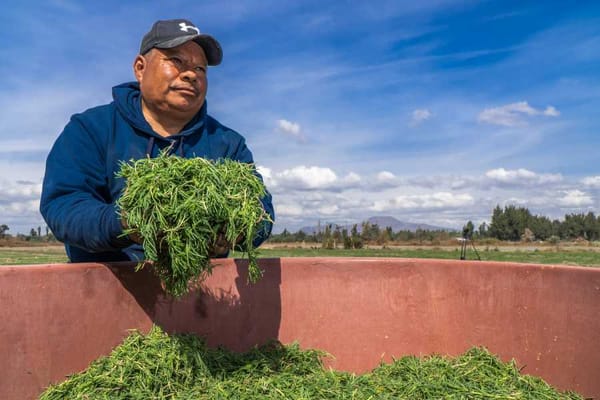Is polygamy still practiced in Mexico?
One of the Mormon women who migrated to Mexico to continue polygamy was Alma Dayer LeBarón, who settled in the state of Chihuahua from Utah in 1924.

Polygamy is a kind of marriage where one person is allowed to be married to another at the same time, the most common form of which is that of a man with more than two wives, also known as polygyny. These conjugal unions have been present in humanity since ancient times, but today they are often unusual. In African or Asian countries with Muslim and Hindu practitioners is where most of these unions occur.
In America, polygamy was practiced by the Church of Jesus Christ of Latter-day Saints, a religion founded in the United States. However, parts of the country began to prohibit this practice in 1885, so several of its members fled to Mexico and Canada, where they continued the habit. Five years later, in 1890, the church would prohibit these multiple unions and from 1910 excommunicate those who continued the practice, although to this day there have been cases of "fundamentalist Mormons" in states such as Utah.
Polygamy in Mexico
One of the Mormons who emigrated to Mexico to continue polygamy was Alma Dayer LeBarón, who settled in the state of Chihuahua from Utah in 1924. Years later, one of his sons, Ervil Morrell LeBarón, founded a new fundamentalist branch of Mormonism called Iglesia del Primogénito de la Plenitud de los Tiempos, establishing its headquarters in Galeana, Chihuahua.
Today, the LeBarón community continues to practice polygamy but it is becoming less common, as several have stopped practicing it in recent decades, commented one of the members under anonymity for AP. While in an interview in 2017, Julián LeBarón commented that polygamy is a tradition and that it is done with the consent of women, as long as they are of legal age.
"Polygamy is one thing and crime is another. We accept polygamy but not the fact of violating minors," LeBarón added. The activist also said that in Mexico everyone "practices" polygamy, but does not accept it "and worse, they have children and do not even recognize them. We do take care of them," referring to the high rate of single mothers in the country.
On the other hand, the Nahua culture of Zongolica, in the highlands of Veracruz, practices a kind of polygyny, where a man in addition to his wife can "buy" other partners, even if they are under 15 years or have not started menstruating. The Nahuas win the young woman of their interest through various rituals and gifts for the parents and end up settling in the same space with the other women. In addition, procreated children live together as brothers and sisters.
Legal situation
Polygamy is illegal in Mexico, despite the above cases. In the Federal Penal Code, there is a section called "Against Civil Status and Bigamy". In that section, it is read in Article 279:
A person who, being united with a person in a marriage that has not been dissolved or declared null and void, contracts another marriage with legal formalities shall be liable to imprisonment for a term of up to five years or a fine of 180 to 360 days.
Although in Mexico and other American countries it is already prohibited, there are 47 countries in the world where polygamy is legal, according to a document from the Social Security Institution in France.
Those countries are Afghanistan, Algeria, Bahrain, Bangladesh, Benin, Burma, Burkina Faso, Cameroon, Chad, Comoros, Congo, Egypt, Central African Republic, Gabon, Gambia, India, Indonesia, Iraq, Iran, Jordan, Kuwait, Lebanon, Liberia, Libya, Malaysia, Mali, Mauritania, Morocco, Niger, Nigeria, Oman, Pakistan, Senegal, Sierra Leone, Somalia, Sudan, Syria, Tanzania, Tunisia, Togo, Uganda, United Arab Emirates, Yemen, Djibouti, Zaire, and Zambia.




